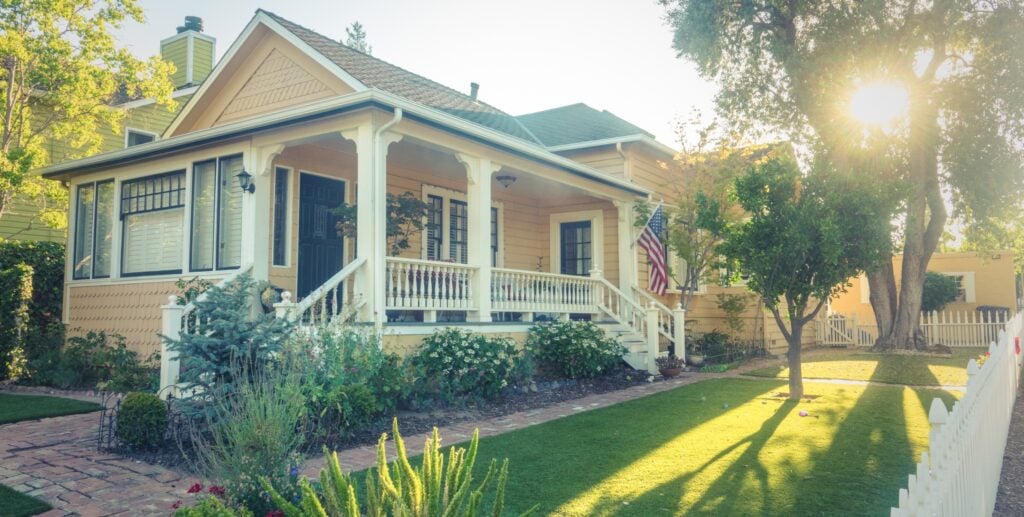Seven in ten empty nesters are refusing to downsize, placing increasing pressure on the state’s already significant housing shortfall.
Research by Australian Seniors has revealed 20 per cent of empty nesters in NSW and the ACT have already moved to a smaller property after their children moved out, while 13 per cent were considering it.
The majority, 67 per cent, were still living in large family homes with no plans to sell, despite research showing this could free up nearly 60,000 desperately needed properties across the country for younger Australians.
Social analyst and demographer Mark McCrindle said many downsizers were turned off due to the financial burdens associated with selling and repurchasing, yet often the emotional and practical barriers were even larger.
“This is the home they raised their children in, to give up that family home is to give up sentimentally and is a signal that the parenting stage has ended, many don’t want to admit that,” he said.
MORE: Huge prediction for Aussie house prices
Apartment living is perfect for empty nesters but not enough of them are taking it up. Picture: Supplied
MORE: Home loan trap taking years to escape
Packing up a lifetime’s accumulation of things was often placed in the “too hard basket,” while many held onto the large homes for grandchildren or ‘boomerang kids,’ a term used to describe adult children who returned home usually due to saving to buy their own property.
Mr McCrindle said there needed to be a financial incentive that would encourage older people to move to more suitable accommodation.
“They don’t want to be penalised when they downsize,” he said. “The support of others can get through the practical and emotional blockages, where the young people step in and say don’t worry about the move and decisions, we will help.”
Wealthier empty nesters were the least likely to give up the family home, with only 8 per cent of high net worth individuals (worth over $200,000) had downsized, according to Australian Seniors data.
PropTrack data showed Mosman, Earlwood, Concord and Mona Vale were among suburbs that potentially had the largest empty nester population, with the biggest portion of owners above 50 all with holding periods of over a decade.
MORE: Where the population has boomed most and why
Mark McCrindle says empty nesters need to be incentivised to sell their homes.
PropTrack senior economist Eleanor Creagh said as Australia grappled with a housing shortage, one of the big untapped sources was making better use of existing homes.
With the Australian Seniors survey indicating the majority of empty nesters were not actively thinking about downsizing, the economist said it was likely they were facing too many disincentives to relocate to overcome their emotional and cultural attachments to homes.
One of the biggest is stamp duty, which Ms Creagh said could be looked at for review — or even to have concessions for people leaving a family home for a smaller one.
Insufficient numbers of suitable homes for them to downsize to nearby is also likely a factor.
“The decision to downsize isn’t just financial, it’s a very personal decision. And the cost of stamp duty and a lack of suitable alternatives is a disincentive for a lot of older Australians — particularly given all the emotional and cultural factors at play,” Ms Creagh said.
Federal Housing Minister Clare O’Neil has previously urged states to address stamp duty as a means of incentivising empty nesters. Picture: John Grainger
Federal Housing Minister Clare O’Neil was approached for comment, and a spokesperson for her said stamp duty was a potential barrier that needed to be addressed at a state government level.
Previous reports show Ms O’Neil swung her weight behind pushing states to scrap stamp duty as she believes it “prevents people from moving around the housing market in the way that suits them best and it creates cost for everyone who is selling or buying a home.”
Daniel Gannon, executive director at the Retirement Living Council, said many retirees remained trapped in an ‘asset-rich, income-poor’ scenario, living in oversized homes that could better serve young families.
“The financial disincentives to ‘right-size’, including harsh pension penalties, force them to stay put, despite the huge benefits of transitioning to retirement communities,” he said.
“Older Australians must be reassured that ‘right sizing’ is financially safe, not a decision that results in monetary loss.”
Miriam and Keith Grenier downsized after finding the perfect apartment. Picture: Rohan Kelly
Empty nesters of 10 years, Miriam and Keith Grenier, weren’t planning on downsizing until Ms Grenier came across a penthouse at Ellipse Property’s brand new Castle Hill development Carrington Place.
Their biggest incentive to purchase was not having a garden to maintain and moving to a brand new home where they could tailor the plans, all while staying in their community.
“After I saw the penthouse plan I said to my husband I think I’ve found a beautiful apartment,” she said.
“If I didn’t find this, we may not have moved as it wasn’t a must for us to move. We would’ve stayed there until we were much older.”
BIGGEST EMPTY NESTER SUBURBS
| Suburb | Median Sale Price 12 months | Average Hold Period years | Empty nester population (50+) |
| Mosman | $6,000,000 | 13.4 | 12,035 |
| Earlwood | $2,107,500 | 17.2 | 7,393 |
| Concord | $3,111,000 | 14.9 | 5,867 |
| Mona Vale | $2,541,000 | 15.2 | 4,922 |
| Sylvania | $1,777,500 | 16.2 | 4,793 |
| Newport | $2,750,000 | 15.2 | 4,323 |
| Oatley | $2,465,000 | 16.7 | 4,304 |
| Beecroft | $2,590,000 | 17.6 | 4,156 |
| Narrabeen | $3,130,000 | 13.2 | 3,963 |
| Hunters Hill | $4,550,000 | 14.8 | 3,950 |



















 English (US) ·
English (US) ·